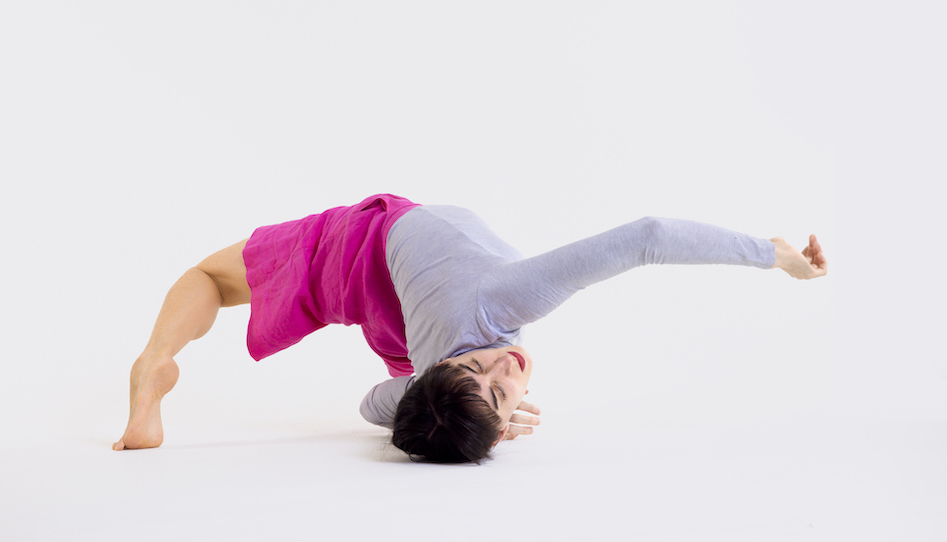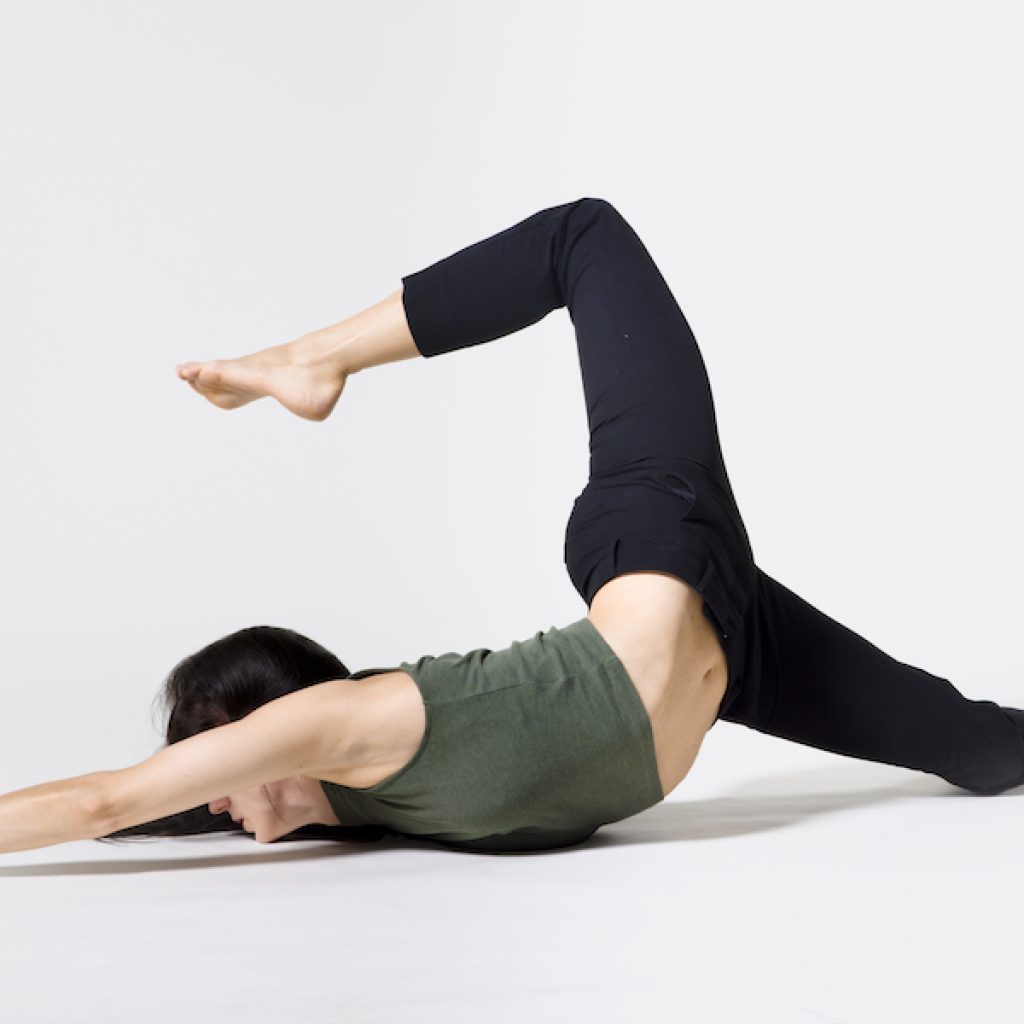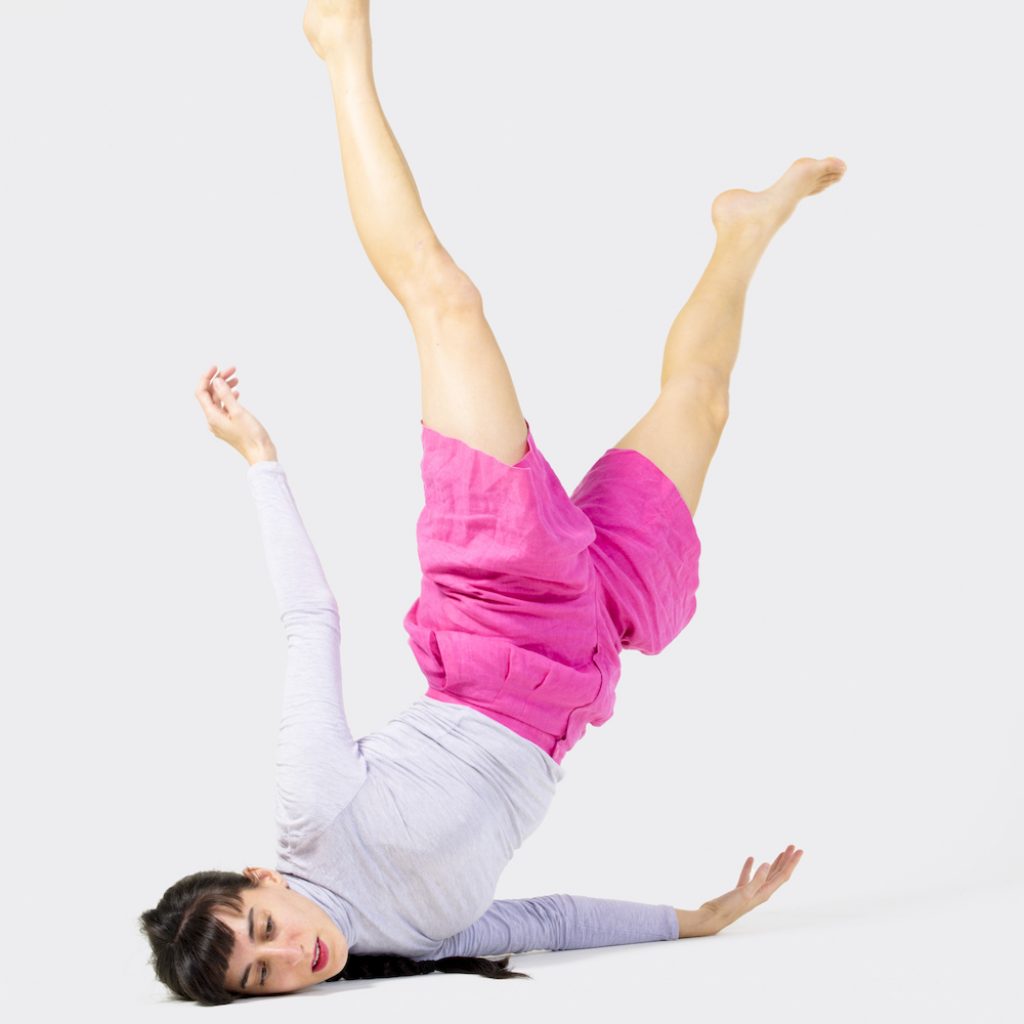Dance Informa had the opportunity to speak with the lovely Mathilde Gilhet about her life in dance, her unique floorwork creations and the WE Program, which raises money to support dance projects around the world. Learn more about her and her work below.
When did you start dancing? Can you give a short history of your life in dance?
“I grew up in France, and initially started out playing music. Every day on my way to my clarinet lesson, I would pass in front of the dance studios, and at some point I asked my parents if I could try dance. So I started dancing when I was seven or eight years old and when I had to choose between music and dance at age 12, I chose dance. I went to a contemporary dance school attached to a company in the north of France until I was 17 years old, which gave me the opportunity to see performances and learn about what it was really like to be a professional dancer. After that, I went to study in Geneva, where I had the incredible opportunity to work with top choreographers including Alexander Ekman, Hofesh Shechter and Itzik Galili, among others. After studying there for three years, I got my first full contract working for a company in Lisbon, Portugal, and I stayed there for six years. It had been my dream to travel the world and meet new people through dance, and I was lucky to have the opportunity to tour extensively.
Next, I freelanced for four years, which I also really enjoyed. I started in Lisbon, and then traveled through Europe for projects and teaching. When my best friend and his husband decided to open a company in Columbus, Ohio, I moved to America to join them. We started FluxFlow Dance Project and opened FLUX + FLOW Dance and Movement Center, and the experience taught me so much, especially about the production side of dance. From contacting people to secure opportunities to social media, we were responsible for making things happen and had to do everything from scratch. It was definitely a culture shock, but I loved it, especially the cold winters and snow. People were so nice, and we were lucky to have a beautiful community of teachers and arts lovers. I stayed there for two years before moving to Vancouver to be with my partner and to teach at Arts Umbrella. It was a huge experience being able to teach alongside legendary choreographers like Crystal Pite, and I was very inspired by seeing the way she worked. Canada was also very different from America, and I learned a lot there.
My partner (who is Italian) and I then decided we wanted to go back to Europe to be nearer to our families. We decided to try one audition and both got it, so we moved! Now I am in my second year of dancing with TanzLuzern in Switzerland. I definitely plan to come back to America in the future, especially since my partner now has Canadian citizenship, which will make traveling back and forth much easier.”
When did you start making your floorwork videos for Instagram? Was there one certain post that caused your Instagram to explode?
“I never had any formal training in floorwork or even knew that it was its own style until recently. When I was a child, my parents had a house in Paris with wooden floors, and that was my playground. When I started dancing, I’d always find myself on the floor while improvising as a comforting and safe place. When I started teaching, I found that my students were very interested in movement on the floor and started developing a language through teaching. The Instagram videos began as a way to keep my students at Arts Umbrella motivated during the pandemic. I would post a floor movement challenge once a week, which they had to either reproduce or put into their choreography assignments, post a video of and tag me in. Soon enough, people I didn’t know started doing the challenges and getting interested in the work. One post suddenly got like 10,000 views, and I started to get more followers. Because I was posting regularly for my students, there was a snowball effect, and more and more people were seeing the videos and learning the movements. Before this, I wasn’t an Instagram person at all, so it was a big surprise and a new experience for me.”
Did your posts always have fun names and descriptions? Can you say a little more about your motivation for the descriptions and how you decide what to name things? What comes first, movement or title?
“I have always tried to give fun names to help students remember certain movements while teaching. When I learn choreography myself, I often use names to remember the steps. I didn’t start the naming practice right away on the posts, but in my head the titles were always clear. I’d think, ‘This is the helicopter on fire’ or whatever. Because I had a lot of followers, I wanted to find a way to give visibility to other people through my movement. Most of the time, I’m inspired by nature or people or stories or a project I hear about. I started to pair the movements with things I really believe in or want other people to know about. It became a game to associate one movement with a project or program or fact or something interesting to learn about. Sometimes I start with the name, and sometimes I start with the movement. My phone is filled with animals, objects, people, etc. that I can get inspired by.”
What is the WE Program, and how was it born? How often are winners selected, and what are the selection criteria?
“During the pandemic, everyone was stuck at home, and we wanted to still meet and move and dance. People were asking me to give online classes, and I initially found it hard to say yes. I was a bit scared of teaching in front of a lot of people that I didn’t know. I got so many requests, though, that I agreed to do one online class in honor of my birthday in November of 2020, at a very low price with all proceeds to be donated to a dance organization. When searching for a dance organization to donate to, I couldn’t find one that fit my ideals. I really wanted to know where the money was going to go and what it would support, so I decided to make my own structure with the support of my partner. We had 700 people attend the class, and then I held an open call for people to propose a project, and we donated all the money to the selected project. That’s how the WE Program was born. With a minimum contribution from everyone, we can do a lot of things.
The frequency depends on my schedule with the company I’m in, but we usually do the program a maximum of once every two months. For the jury, I invite five people from the movement community per round, either people I know and trust or who are recommended to me by my peers, and I try to choose jury members from all parts of the world. They can be dancers, directors, audience members, acrobats, etc., so that everyone is represented in the jury panel. At the end of each cycle, I add up the scores and notify the winner. Normally, there is one project that stands out, but sometimes there will be two with similar scores, in which case I schedule a call so we can meet and I can learn more about the proposed projects. I try not to judge and to stay out of the selection process as much as possible because I sometimes know people who have sent in an application, and want the selection to be maximally fair.
I hope to inspire other artists through the WE Program. There are so many people with visibility on Instagram, and this is one way to use it. It was not my desire to have that visibility, but since it happened, I really want to do something good with it. To be an inspiration to someone. To help the community. As dancers, things are rarely easy financially, and I have always found comfort in my colleagues. I know that if I want to go somewhere to audition, I will have a bed or couch to sleep on. The movement community is very tight knit, and we can find many ways to care for one another. Spending $4 to take a class is not much, but we can make big things happen with these small gestures.”
You can follow Mathilde Gilhet on Instagram: @mathildegilhet.
By Charly Santagado of Dance Informa.


















